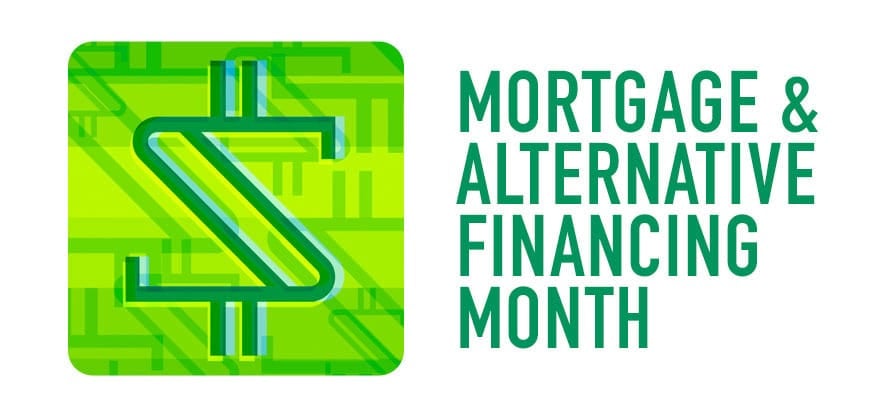This month, we’ll talk to mortgage leaders about where the market is headed and how products are evolving digitally to suit buyers’ needs now. We’ll also explore emerging alternative financing options that are changing the game for buyers and sellers. Join us for Mortgage and Alternative Financing Month.
Maybe it’s the avocado toast. Or the student loan debt. Maybe it’s the recession that began over a decade ago or, or the one that began last year.
But whatever it is, there has been a steady stream of headlines about how the U.S. is becoming a nation of renters. Homeownership, the story goes, is slipping through the fingers of more and more Americans.
In reality, the U.S. homeownership rate has only fluctuated slightly over the last 20 years, hitting a high of 69.1 percent in 2005 before ultimately settling back down at 65.8 percent during the fourth quarter of 2020, according U.S. government data. Still, there’s a sense that things are getting harder — soaring prices during the pandemic haven’t helped — and that more and more people will need an alternative route if they want to own a house.
Enter the alternative financing models.
Along with revolutions in closings, showings, and other real estate technology, a host of new startups have emerged in recent years to provide different ways to finance a home purchase. Some blend renting and owning, others help with down payments. There are a lot of ideas out there.
To better understand the landscape, and where things are headed, Inman reached out to leaders of multiple companies pioneering these new ideas.
The takeaway from those conversations is that we’re at a pivotal moment right now, where the long-gestating digital revolution in real estate is finally coming to finance, mortgages and the concept of ownership itself. That doesn’t mean tried-and-true features of buying a house will go away, but rather that consumers of the future will likely have more options than ever before.
The landscape of home financing is changing
The proliferation of alternative financing and homeownership options (more on their specifics below) over the last few years raises an important question: In the coming years will people still go to their banks for 30-year mortgages?

Todd Sherer
The short answer is that the conventional mortgage isn’t going away any time soon.
“The reality is right now where interest rates are, if you have 30 percent down and you don’t plan on moving and you don’t mind the hassles of homeownership, I’d be honest and tell you you’re probably better off with a mortgage,” Todd Sherer, founder and CEO of alternative ownership startup Fleq, told Inman.
Leaders of other startups were similarly bullish about conventional financing approaches.

Nik Shah
Nik Shah, who cofounded Home.LLC to help consumers overcome obstacles related to down payments, pointed out that the “30 year mortgage is one of the cheapest sources of debt financing of anything in the world.” As a result, it remains a good option for many people, he said.
“Homeownership remains a core of the American dream,” he added.
Adena Hefets agreed. Hefets co-founded and leads Divvy Homes, and she told Inman that conventional financing will continue to be well-suited for people who have some stability in their lives, for example by holding down the same job for longer periods of time.

Adena Hefets
“I don’t think the 30-year mortgage is going anywhere,” she said.
But Hefets also added a critical caveat, saying that more and more people aren’t living strictly conventional lives and working conventional jobs.
And for those people, conventional financing just doesn’t work.
That seems to be the philosophy underlying much of the alternative financing and homebuying sector.
Sherer, for example, described the conventional mortgage as “a tool, but it’s always the same tool.” And he added that in the future, he doesn’t “believe there’s going to be a one size fits all” approach to buying a house.

Sean Black
Sean Black, co-founder and CEO of Knock, also pointed out that “clearly more people want to transact than do, and it’s just so hard and stressful and expensive it holds them back.” His company is premised on the idea that if it can serve more of those people it’ll help more consumers and tap into a vast underserved market along the way.
“We think buying and selling homes in five to 10 years looks more like leasing with the advantage of having upside equity,” Black said. “It’s going to be more like renting an Airbnb.”

Vanessa Famulener
Vanessa Famulener, a vice president at HomeLight, told Inman that there are many people out there who are interested in the benefits of homeownership but who are also thinking about it differently. They might not be saving up for a 20 percent down payment, for example, and are instead opting to invest their money via platforms such as stock trading app Robinhood. Other would-be homeowners be highly educated and have high-paying jobs but — thanks to things like student loans — may not have much savings at all.
“That doesn’t mean they’re not creditworthy or that they shouldn’t be able to purchase a property,” Famulener said.
Hefets said that in the case of her company, many customers work in medicine, where they might have racked up large student loans. Others are teachers, who have steady paychecks and good job security, but where salaries are low enough that saving for a down payment is a challenge. And still others work in the gig economy, driving for Uber or doing other jobs where they might make $5,000 one week and $500 in another.
The point here is that right now there is a convergence of several trends: A huge group of millennials is hitting homebuying age; the economic landscape today favors gig work and has left many people with non-real estate debt; and job markets require people to move often and quickly.
On top of those trends, Wall Street and Silicon Valley have shown an appetite for startups that rethink real estate financing.
The result is a recipe for sea change.
“I do think we’re at the very beginning of a major change in the way people transact real state,” Famulener said.
No one has a crystal ball to see how that change will play out, but most of the industry members who spoke to Inman said they don’t envision a winner-takes-all future where one or two companies, or business models, ultimately win out. Instead, the future is likely to look more like a buffet, where consumers have an array of paths for financing and purchasing their homes.
“Consumers are going to have a la carte options,” Black said.
The solutions
There are more companies developing alternative homebuying ideas out there than any one news story can cover. But here are some of the ones that Inman readers have flagged in recent weeks. (Keep in mind also that while Inman has studied these options, our budget didn’t quite cover the cost of buying a dozen homes for this story so we could experience the products first hand. Which is to say, do your due diligence.)
The trade-in models
HomeLight Trade-in
HomeLight’s has a pair of flagship products, one of which is called Trade-In. In this case, the company comes in and makes an offer on a consumer’s existing property. With an offer in hand, the consumer can then go out and make offers on new houses without contingencies.
The company promises that once the offer on the new home is accepted, “everything comes together in days, not months.” HomeLight ultimately buys the old house, then turns around and sells it. If the sale closes for more than HomeLight paid, the company shares the profits with the original owner.
HomeLight also provides Cash Offer, which as its name suggests is a product that makes cash offers on behalf of consumers. The program specifically lets would-be owners find the home they want, then sees HomeLight step in and purchase it on their behalf in cash. When the consumers gets their actual mortgage, they buy the house from HomeLight and pay a 1 percent fee.
Like many programs in this post, the idea behind HomeLight’s offerings is that consumers who can make cash offers are more competitive and actually win houses — which has proven to be a major challenge over the last year.
Knock Home Swap
Knock’s signature offering, Home Swap, let’s homeowners buy and move into a new house without the hassle of first selling their old house. For those who are approved to participate, they get a fully underwritten home loan that Knock says enables consumers to make non-contingent offers on new houses. After the offer is accepted, Knock covers the mortgage payments on the old house and fronts the consumer up to $25,000 to get the property ready to sell. This money functions as a kind of interest-free bridge loan.
Consumers then pay back those costs from the profits when the original home ultimately sells. Knock charges a 1.25 percent “convenience fee” when consumers buy their new homes.
Homeward
Homeward makes cash offers on behalf of consumers. Once the company owns the property, the would-be homeowner can move in and rent it from the company for up to six months (in that way it’s also similar to some of the hybrid models discussed below).
Once the consumer has moved into the new house, the old property goes on the market. And then after that property sells, the consumer buys the new home back from Homeward. The firm says that it can “provide a floor price guarantee to most homebuyers,” and that if the old home doesn’t sell in six months it will buy the property itself.
Down payment assistance models
Home.LLC
Home.LLC is designed to help people who haven’t been able to save up for a downpayment. The company offers consumers up to $500,000 so they can piece together enough for 20 percent down. With a payment of that size, of course, homeowners don’t have to get mortgage insurance and can often secure better interest rates. For those reasons, Home.LLC believes it can save buyers significant amounts of money.
Home.LLC sees it’s assistance as an investment in a consumer’s home, not a loan. That means the consumer doesn’t have monthly payments to the company and there are no origination fees. Instead, Home.LLC shares in the profits, or losses, on the home when the owner eventually sells.
Landed
Landed is geared to would-be homeowners in high-cost areas. The company comes in and contributes to the down payment on a home so that the consumer can hit the coveted 20 percent threshold. The company will contribute as much as 15 percent of the cost of the home, meaning consumers could theoretically get a home with only 5 percent down, even as they reap the benefits of having a larger payment.
The company doesn’t charge any monthly payments for the money it lends to consumers. Instead, when the house sells customers are expected to pay back whatever they got from Landed, plus 25 percent of the profits on the home. Landed shoulders 25 percent of the losses if the home loses value.
The hybrid ownership models
Divvy Homes
Well-funded Divvy Homes has designed a product that is meant to combine the benefits of a cash offer with the advantages of a rent-to-own model. The program works by letting consumers go out and choose a home of their liking. Divvy then buys the home with cash on behalf of the consumer, asking only for a downpayment of between 1 and 2 percent.
Once the home is purchased, consumers get to move in and rent it from Divvy. Those rent payments also build equity in the house, and the company says that most of its customers become eligible for a standard mortgage within three years. Customers ultimately use the mortgage to buy the house from Divvy.
The idea is that the program helps people who might not have an adequate downpayment right off the bat, but who can afford the monthly payments.
Fleq
Fleq forms limited liability companies (LLCs) with consumers. The company calls these LLCs “alliances,” and they are technically what buy and own the homes on behalf of consumers.
Consumers own a percent of the LLC, and then rent the house back according to how much equity they have. So for example, if the consumer puts 50 percent down into the LLC and market rent for the property would be $1,000, the consumer has a monthly payment of about $500.
Consumers can buy more of the LLC over time if they want, though there is no obligation to do so. Right now, Fleq requires 3 percent down. When the home’s occupants wants to sell the property, they split the profits with Fleq according to each parties respective ownership stake.
Fleq also provides a subscription-like property maintenance program, as well as the ability to transfer equity into a new property. The result is an experience that the company believes has the ease and flexibility of renting, combined with the ability to build equity that’s normally only available to owners.
Unison
Unison offers a product that is similar to a home equity loan. However, instead of repaying the borrowed money monthly or adding the cost into the mortgage, Unison shares in the profits or losses when the home sells. In this way, it’s a kind of co-ownership concept that lets people tap the value of their home without having their day-t0-day expenses go up.
The company notes that its customers can use the money they get from Unison for anything. “Remodel your home, start a business, pay for college, invest, or take that long-awaited trip,” the firm says on its website. Users can ultimately borrow up to 17.5 percent of the value of their home.
ZeroDown
ZeroDown bills itself as a “a third option between renting and owning” that gives consumers a “try-before-you-buy” path to ownership. The company specifically goes in and buys homes on behalf of consumers, then rents the homes back to them while providing a concierge service for things like maintenance.
The occupant of the home has the option to buy the home at any point during the next three years. The company touts the fact that those who do wish to purchase the house won’t face competitive offers, and that the price of the home will rise predictably according to ZeroDown’s published rates.
On the other hand, if the occupant doesn’t want to buy the house, after two years he or she can simply leave and the process will be “just like moving out of an apartment at the end of a lease.”














